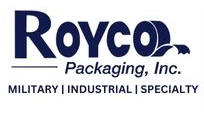Moisture barrier bags hold a significant role as they shield sensitive items from harsh atmospheric factors. They help prevent exposure to humidity, safeguarding items from dampness-induced degradation and potential damage. This singular function has cemented their reputation as the go-to packaging solution for numerous end applications. Let's get into the different types of moisture barrier bags employed globally to ensure that your precious commodities remain unaffected by external moisture.
Static Shielding Bags
First on the list are static shielding bags. As a typical protective solution, they are designed with intricate layers of aluminum shielding, powerful enough to weaken static charges. This shielding acts as a safety buffer, absorbing the charges and preventing them from penetrating the bag. These bags are predominantly used in the electronic components industry, where they are tasked with safeguarding expensive gadgets against static damages. The special metallized film layers also fend off any moisture or dust infiltration, thereby keeping the packaged commodities in immaculate conditions.
Anti-Static Bags
These types of moisture barrier bags are made from low-charging material that safeguards both electronic and non-electronic items. Their prime function is to neutralize static charges within and on the surface of the bag, thereby preventing any electrical discharge. Largely used in the packaging of electronics, they offer protection from both electrostatic discharge (ESD) and moisture.
MIL-PRF-131 Moisture Barrier Bags
A blend of durability and heightened protection, these bags are used to preserve military-grade components and meet stringent Department of Defense (DOD) requirements. Their robust layering system, which includes the use of adhesive, polyester, foil and polyethylene, ensures a perfect seal against water vapor, oxygen, and grease. This protective combination safeguard the packaged items from moisture corrosion and damage even in the most exigent conditions.
Cleanroom Bags
Another pivotal kind in the lineup is cleanroom bags. Introduced to provide an optimal environment for sensitive products, these bags find their application in industries that underscore the importance of cleanliness and sanitation. They are manufactured in a controlled environment that complies meticulously with cleanliness standards. While these bags primarily serve to protect items from contamination, they also effectively inhibit moisture intrusion, hence adding an extra layer of protection to the sensitive commodities.
Vacuum Sealed Moisture Barrier Bags
Vacuum sealed moisture barrier bags are a popular choice for both the food and electronics industries. They are essentially sealed air-tight, creating a vacuum inside the bag to ensure maximum moisture prevention. This absence of air limits the growth of bacteria, mold, or any other damaging life forms, thus doing an excellent job of preserving the freshness and integrity of the products sealed within.
Desiccant Packed Moisture Barrier Bags
These bags employ a moisture-absorbing substance, a desiccant, placed inside the bag—aimed at maintaining a low humidity level in the packaged space. Typically used in the packaging of electronic components, pharmaceuticals, and foods, they can absorb moisture present and help prevent its accumulation over time.
Moisture barrier bags come in various forms and functionalities, each of them providing a unique approach to secure the items within from the harmful effects of moisture. The choice of the appropriate bag relies heavily on the application and the level of protection required. Be it electronics, food, medicine, or military-grade components, these bags have proven time and again their worth in upholding the integrity and extending the lifespan of our valuable goods. They stand silently in the face of humidity, serving as the unsung heroes in the world of packaging.

